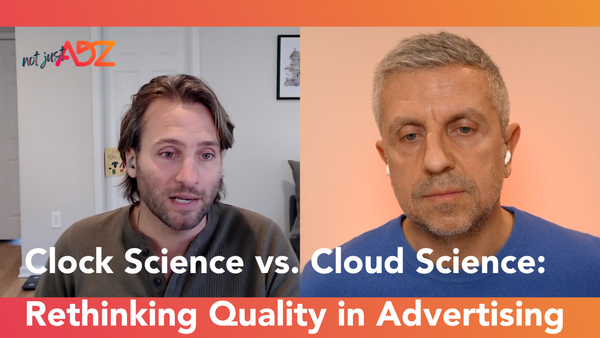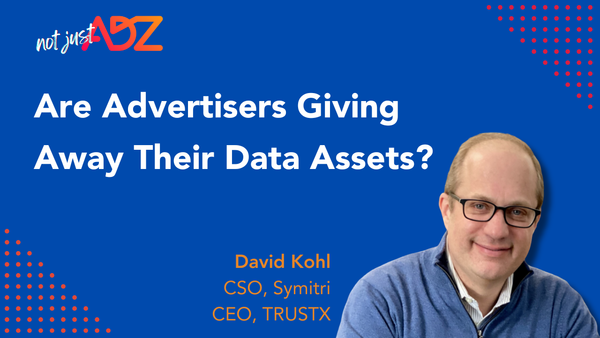News Media Has To Save Itself Rather Than Seek Charity From Advertisers | Adexchanger

It’s never been more necessary to make journalism self-sustainable and save news media from economic collapse.
But it feels like advertisers often frame supporting the news as a charitable endeavor, rather than something that will positively impact their business.
If advertisers feel like they need to go out of their way to support journalism, that is proof the programmatic open marketplace is broken and unsustainable as a channel for quality marketing goals. And if the strategy we envision for news publishers is to continue monetizing through open auction, then perhaps only charity can help.
We need real solutions for funding the news, rather than media companies allowing themselves to be sweet-talked into camouflaged business models by ad tech companies and media agencies. These models hurt media owners, harvest their assets, and slowly but steadily contribute to their revenue decline.
Yet we can’t place all the responsibility on the buy-side, as advertising is only half of the picture.
First and foremost, media owners need to develop effective strategies to support themselves while providing great experiences and value to their audiences and, as a direct outcome, to their advertisers.
Let me share a story that will have you agreeing that news publishers should be saved – but often from their own strategy and monetization teams.
The subscription shuffle
First, some disclosures: In my professional life, I am an independent consultant focused on media monetization. What drives me is the mission to support media brands so they can remain independent, self-sustainable, vital components of our societies and democracies – but also pillars of a healthy internet and quality digital advertising environments.
In my personal life, I subscribe to four news brands in four different countries.
For more than three years, I have been a paying subscriber to a European newspaper that’s a leading media brand in its country.
Initially, I accepted a discounted digital subscription offer, which turned into a full-price plan six months later. I was happy with the value provided by the publisher and went along enjoying (and paying for) my subscription.
A few months into my full-price membership, I received an email sent to the same address I used for my paid subscription, but which I had previously used to set up a free registration on the publisher’s site. The email offered me a subscription plan, which, at full price, was 50% cheaper than my active one.
When my genuine passion for news media’s independence and self-sustainability clashes with this kind of incompetence, it turns me into a cynical and unforgiving person. So, naturally, I unsubscribed and immediately resubscribed for half the price.
Fast-forward a couple of years to this past December’s Cyber Monday sales, when, as a logged-in, active subscriber of the same news brand, I was served a banner ad promoting the same subscription I already had at a price 75% lower than what I was (again, happily) currently paying.
Guess what I did in response.
Altogether, the above mess resulted in the publisher losing 87.5% of my original agreed subscription price. And I doubt I was the only one to take these deals.
Malign misalignment
Imagine the celebration of that publisher’s subscriber acquisition and marketing teams following that piece of genius Cyber Monday campaign.
Then picture the puzzlement of the subscriber retention team seeing a vertical increase in cancellations.
And consider the demotivation of an editorial team feeling totally confused by the conflicting messages.
Half of the company is celebrating a huge step forward in reaching its set goal of adding “new” subscribers and dreaming of the nice bonuses that will appear on their paychecks as a result. Meanwhile, half of the same company is realizing that their bonuses will not arrive this time, as their retention objectives were completely shattered.
It’s necessary for quality news media to diversify their revenue channels. But misalignment of incentives and lack of a common, overarching goal is a recipe for disaster.
Another telling incident happened when I was consulting on a publisher’s audience engagement and subscription revenue improvement project. I was asked by the team that initiated the project not to interview their own colleagues from the advertising team because they would feel threatened – and the ads team didn’t even know about the initiative anyway.
For any media owner facing the challenges and opportunities of the first-party web, its first priority should be repairing the weak links between the departments in its organization.
Save yourself
Before they worry about being “saved” by either advertisers or subscribers, many media owners, especially in news media, must put their houses in order. Doing so might enable them to save themselves by nurturing and fulfilling their own monetization potential.
But doing so requires establishing overarching, company-wide goals for revenue, subscriptions, and whatever other metrics and channels the publisher needs to prioritize. Its different departments must be aligned with, and contribute to, these goals in a way that is complementary and coordinated. This alignment should also apply to individual incentives like bonuses and career progression paths.
The publisher should also create full transparency into how every department is contributing to the achievement of these shared goals, to make sure everybody in the company knows who is doing what and why and sees the common benefit.
Only through companywide strategies with clear alignment and collaboration across departments can publishers fulfill their audience’s expectations for unique, diversified content and a consistent user experience.
When they keep their audiences satisfied and engaged, publishers offer advertisers a clear value proposition. And that clear value exchange is what will save journalism – not charity.
Originally published at https://www.adexchanger.com on March 21, 2024.





